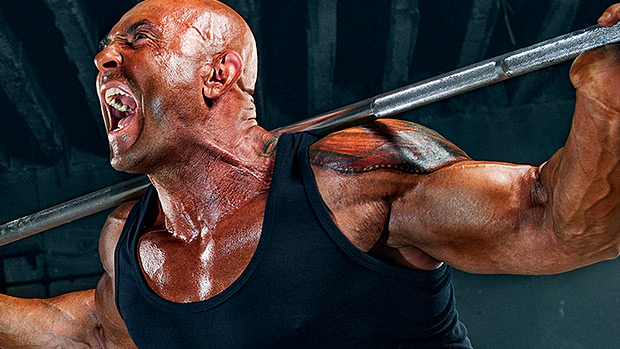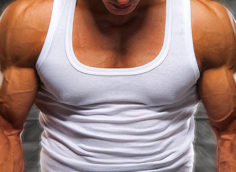Not all squats are created equal. Some work better than others depending on your goal, frame, and injury history. Here's a quick guide to the best squat variations you can do based on your goal and current abilities.
1 – Goblet Squat
The dumbbell or kettlebell goblet squat is an amazing foundational exercise that helps reinforce your technique while building strength.
Since you're holding the weight in front of you, it teaches you to stay upright and forces you to sit between your legs and not too far forward. If you do get forward, you'll simply drop the weight.
By pointing your elbows down, it also reminds you to force your knees out so your elbows don't hit your legs in the bottom position. It can serve as a great teaching tool if you don't have access to a coach.
2 – Front Squat
If you want to compete in weightlifting or CrossFit, the front squat is the most important squat variation to train and master. It can also feel better than a back squat for those who have long torsos.
The front squat mimics the "catch" phase of the lift in the clean & jerk and it has a direct transfer to the Olympic lifts. It can also have a great transfer to other sports like strongman or wrestling since you're often picking up objects or people that are in front of you.
3 – High-Bar Squat
This is perhaps the best builder of general strength and muscle. When you use a closer stance and higher bar position, it's easier on your body since you can't use as much weight as you could with a wide stance and a low-bar position.
You'll be using your lower back and hips less and your quads more. It also allows for a greater range of motion and time under tension, which makes it an excellent tool for packing on muscle. If you need to gain size and you aren't training for anything specific, the high-bar squat is best.
4 – Low-Bar Squat

This is the ultimate way to express your strength. By using a wider stance and a lower bar position, you'll move the bar closer to your hip joint allowing for better leverage. You aren't just using your legs, but also your back and hips.
If you want to get stronger, it'll allow you to typically use more weight than a high-bar squat because of the mechanical advantage. If you want to compete in a sport like powerlifting where absolute strength is king, finding the best bar position and stance is essential since you'll be required to lift the most amount of weight possible.
What's "low bar" and "wide stance" is going to be different for everyone depending on your anthropometry and comfort level. The key is finding the position that allows you to lift the most weight. This is why the low-bar squat is best for overall strength and for powerlifting.
5 – Box Squat
Dealing with mobility issues or past injuries? The box squat can be a great tool to limit depth and take stress off the knees.
By sitting onto a box, you can squat with a more vertical shin angle that reduces stress on the knee joint, but you still get all the same benefits of free squatting from a muscle and strength standpoint.
For this reason, box squats are an excellent choice for athletes since they can recover faster and have less joint stress. Pair this with a special bar like a safety-squat bar to reduce elbow and shoulder stress. This would be the ultimate joint-friendly option for an athlete looking to get strong.
Remember, there's no straight bar or power rack on the field, so you don't always have to free squat with a barbell to get results!





